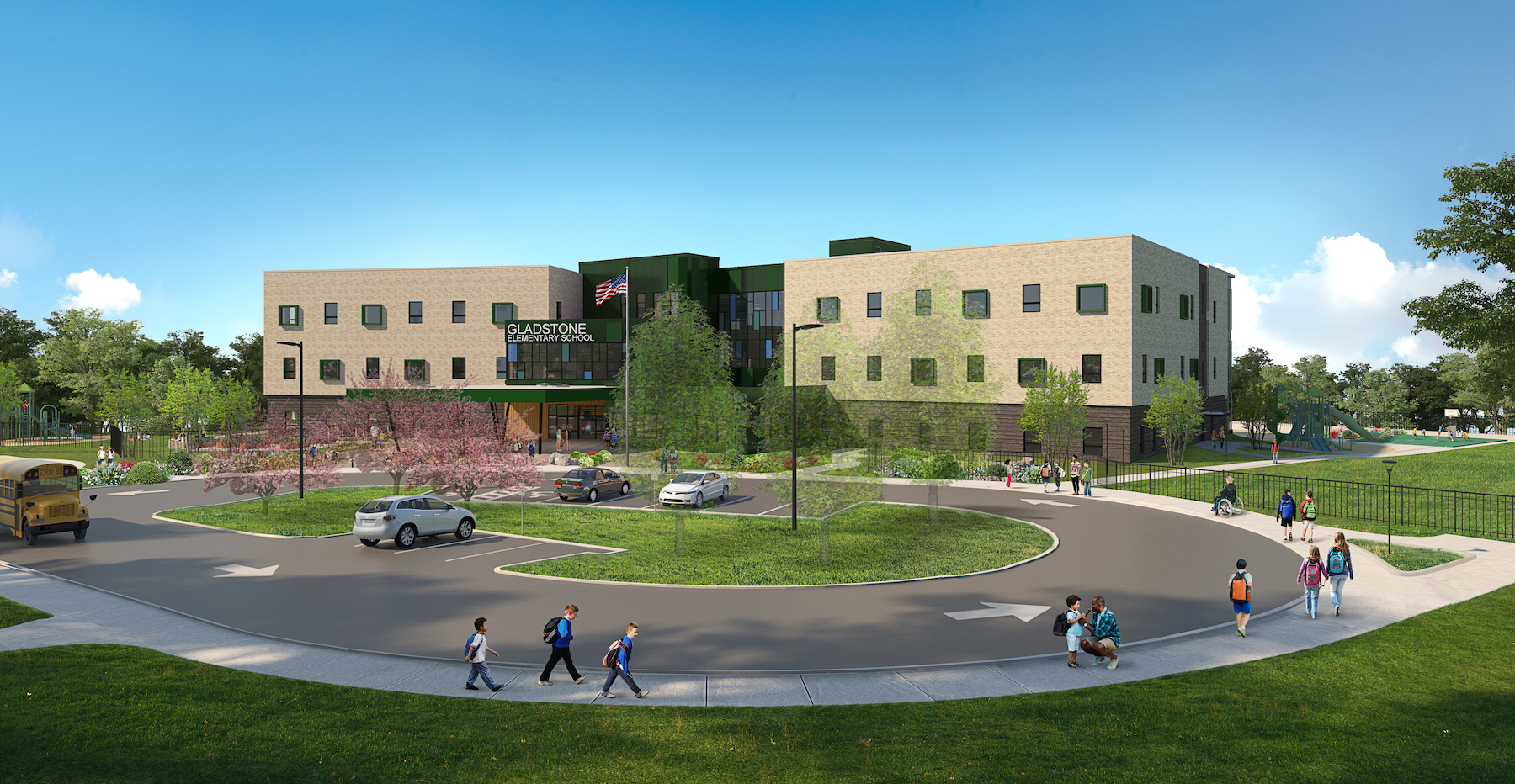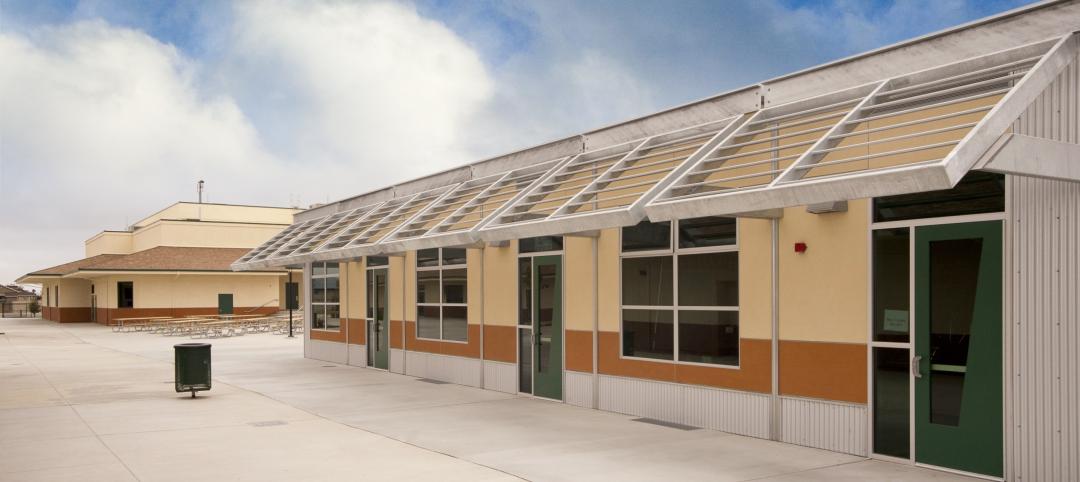Last November, Community Consolidated School District 15, consisting of 20 schools and seven municipalities in Illinois, approved the $93 million Moving 15 Forward referendum. Upon that approval, the District began work to address three major areas of improvement: repairing and restoring facilities, updating learning spaces, and streamlining students’ transitions from elementary through middle school into local high school districts 211 and 214.
Included in this effort is the expansion of Plum Grove Junior High School in Rolling Meadows, Ill., from a junior high serving seventh and eighth graders into a middle school that also educates sixth grade students.
Plum Grove Middle School, which will serve more than 800 students, is seen as a cornerstone of the District’s move toward adolescent-focused middle schools that use the “house” concept, which creates teams of teachers and staff that share smaller groups of students through an academic schedule.
Plum Grove’s $18.4 million upgrade and expansion got started on July 27. Wold Architects and Engineers provided the designs, and Nicholas & Associates is the general contractor. As part of Phase 1 of a four-phase construction plan, additions at Plum Grove include two new three-story classroom wings, or “houses,” which form the backbone of the middle school concept, for a total of 12 new general education classrooms.
Each grade-level house has its own learning commons with an innovative shared learning hub, including a central collaboration space, new science lab spaces, and modern, flexible classrooms. In addition, the project includes site updates such as traffic and paving improvements, a new track, and play fields.
Construction is expected to be completed for the 2024-2025 school year.
Sustainable, energy efficient design

A week before Plum Grove’s expansion was getting underway, the City of Cranston, R.I., held a groundbreaking ceremony for its new $83 million, 105,000-sf Gladstone Elementary School. This is one of five core building projects identified in Cranston’s five-year facility improvement plan that has been approved by Rhode Island School Building Authority for Housing Aid State Reimbursement.
Gladstone Elementary will be 40,000 sf larger than the existing school it replaces, and will incorporate the student body of Arlington Elementary, bringing its total to 798 K-5 students. The Building Team on this project includes Gilbane Building Company, Jacobs Engineering, and Finegold Alexander Architects. Construction is scheduled for completion in 2025.
The old school had been functioning up until June 14, but was in serious need of repair, with boarded-up windows. It will be demolished and during construction students will be relocated to a temporary location in Cranston.
The new building is designed to exceed current sustainability and energy codes. A combination of sub-surface and surface stormwater filtration systems are part of its scope, and the project will be compliant with the Northeast Collaborative for High-Performance Schools Criteria program (NE-CHPs), which provides guidance and verification for new school projects, renovations, and additions.
Gladstone will feature a combination of learning and community engagement areas, like a cafeteria and gymnasium with performance spaces. Its learning spaces will be modeled after Eden Park School in Garden City, where open floor plans contribute to collaborative learning environments. Gladstone will also have designated special-education classrooms, administration areas, a nurse’s office, and food preparation space.
Related Stories
| May 18, 2011
One of Delaware’s largest high schools seeks LEED for Schools designation
The $82 million, 280,000-sf Dover (Del.) High School will have capacity for 1,800 students and feature a 900-seat theater, a 2,500-seat gymnasium, and a 5,000-seat football stadium.
| May 17, 2011
Sustainability tops the syllabus at net-zero energy school in Texas
Texas-based firm Corgan designed the 152,200-sf Lady Bird Johnson Middle School in Irving, Texas, with the goal of creating the largest net-zero educational facility in the nation, and the first in the state. The facility is expected to use 50% less energy than a standard school.
| May 16, 2011
USGBC and AIA unveil report for greening K-12 schools
The U.S. Green Building Council and the American Institute of Architects unveiled "Local Leaders in Sustainability: A Special Report from Sundance," which outlines a five-point national action plan that mayors and local leaders can use as a framework to develop and implement green schools initiatives.
| May 10, 2011
Greenest buildings: K-12 and commercial markets
Can you name the nation’s greenest K-12 school? How about the greenest commercial building? If you drew a blank, don’t worry because our friends at EarthTechling have all the information on those two projects. Check out the Hawai’i Preparatory Academy’s Energy Lab on the Big Island and Cascadia Green Building Council’s new Seattle headquarters.
| Mar 15, 2011
Passive Strategies for Building Healthy Schools, An AIA/CES Discovery Course
With the downturn in the economy and the crash in residential property values, school districts across the country that depend primarily on property tax revenue are struggling to make ends meet, while fulfilling the demand for classrooms and other facilities.
| Feb 23, 2011
“School of Tomorrow” student design competition winners selected
The American Institute of Architecture Students (AIAS) and Kawneer Company, Inc. announced the winners of the “Schools of Tomorrow” student design competition. The Kawneer-sponsored competition, now in its fifth year, challenged students to learn about building materials, specifically architectural aluminum building products and systems in the design of a modern and creative school for students ranging from kindergarten to sixth grade. Ball State University’s Susan Butts was awarded first place and $2,500 for “Propel Elementary School.”
| Feb 15, 2011
LAUSD commissions innovative prefab prototypes for future building
The LA Unified School District, under the leadership of a new facilities director, reversed course regarding prototypes for its new schools and engaged architects to create compelling kit-of-parts schemes that are largely prefabricated.
| Feb 9, 2011
Gen7 eco-friendly modular classrooms are first to be CHPS verified
The first-ever Gen7 green classrooms, installed at Bolsa Knolls Middle School in Salinas, California, have become the nation's first modular classrooms to receive Collaborative for High Performance Schools (CHPS) Verified recognition for New School Construction. They are only the second school in California to successfully complete the CHPS Verified review process.
| Dec 17, 2010
Alaskan village school gets a new home
Ayagina’ar Elitnaurvik, a new K-12 school serving the Lower Kuskikwim School District, is now open in Kongiganak, a remote Alaskan village of less than 400 residents. The 34,000-sf, 12-classroom facility replaces one that was threatened by river erosion.
| Dec 6, 2010
Honeywell survey
Rising energy costs and a tough economic climate have forced the nation’s school districts to defer facility maintenance and delay construction projects, but they have also encouraged districts to pursue green initiatives, according to Honeywell’s second annual “School Energy and Environment Survey.”















